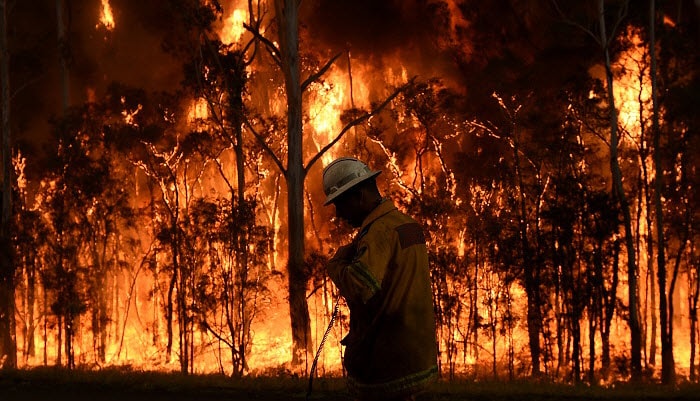Mastering Bushfire Readiness: The Function of a BAL Assessment in Risk Mitigation
Mastering Bushfire Readiness: The Function of a BAL Assessment in Risk Mitigation
Blog Article
The Importance of Bushfire Management in Fire Defense
In the realm of fire defense, the relevance of efficient bushfire management can not be downplayed. As neighborhoods globally face enhancing circumstances of wildfires, the positive strategy to stop and reducing these all-natural catastrophes with tactical bushfire monitoring strategies has become an important element. Past the immediate threat to human life and property, the interplay in between bushfire administration and environmental conservation, community involvement, and environment adjustment positions intricate obstacles that need comprehensive services.
Significance of Proactive Bushfire Prevention
Proactive bushfire prevention strategies are crucial in mitigating the devastating effects of wildfires on environments and neighborhoods. One key facet of proactive bushfire prevention is gas management.
Informing the public on fire safety and security methods and advertising neighborhood recognition about the significance of bushfire avoidance are important components of positive methods. Ultimately, aggressive bushfire avoidance plays a significant function in safeguarding areas and ecosystems from the destructive effects of wildfires.
Function of Community Engagement in Fire Protection
Involving the community in fire security efforts is indispensable to improving the performance of positive bushfire avoidance strategies. Neighborhood involvement plays a critical duty in fostering a cumulative understanding of the risks posed by bushfires and the importance of preparedness actions. By including neighborhood residents, authorities can share crucial info on fire safety practices, emptying procedures, and very early caution systems, empowering individuals to take positive steps to safeguard their lives and buildings.
By fostering a culture of preparedness and collaboration, neighborhoods can reinforce their ability to react efficiently to bushfire emergencies, minimizing the impact on lives and residential or commercial properties. Inevitably, community engagement is a keystone of extensive fire defense methods, stressing the significance of cumulative activity in guarding prone locations from the threat of bushfires.
Relevance of Wild Animals Conservation in Bushfire Administration
Preservation of wild animals plays an important duty in reliable bushfire administration methods, making certain the defense of diverse ecosystems and biodiversity in fire-prone regions. Wildlife conservation is crucial as it contributes to the general durability of environments, aiding in their capacity to stand up to and recoup from the effect of bushfires. By preserving environments and shielding numerous types, the natural equilibrium within these ecological communities is kept, which is essential for their long-term health and sustainability.
Furthermore, wildlife conservation likewise helps in lowering the threat and strength of bushfires. Healthy and balanced environments with unspoiled wild animals populations can work as all-natural firebreaks, decreasing the spread of fires and restricting their destructive potential (BAL Report). Certain pet species, like tunneling animals or birds that spread out seeds, play special duties in stopping fires or aiding in the post-fire regrowth of environments
Including wildlife preservation into bushfire management methods is not only necessary for securing biodiversity however likewise for promoting the overall health and strength page of ecosystems despite enhancing fire threats.
Advantages of Strategic Gas Decrease Programs
Purposefully implementing fuel decrease programs is essential in alleviating the danger and influence of bushfires in fire-prone regions. These programs include controlled burning, mechanical clearing, and various other techniques to lower the amount of combustible greenery available to fuel wildfires. By purposefully reducing gas loads in key locations, such as close to property neighborhoods or essential infrastructure, the intensity and spread of bushfires can be considerably lowered.
Among the primary advantages of gas reduction programs is the enhancement of total fire strength in an ecological read review community. By producing critical gas breaks and minimizing the connection of plants, these programs assist to disrupt the course of a bushfire, making it much easier for firemans to extinguish the blaze and have. Additionally, gas reduction programs can secure biodiversity by avoiding excessively intense fires that can ravage habitats and threaten wild animals populaces.
In addition, these programs can also protect human lives and property by reducing the threat of devastating fires that position a significant threat to neighborhoods. Eventually, critical fuel decrease programs play a vital role in positive bushfire monitoring and fostering a safer environment for both individuals and nature.
Influence of Climate Adjustment on Bushfire Danger

Higher temperatures result in drier greenery, making it much more susceptible to ignition. Minimized rainfall in specific regions extends dry spell conditions, additionally raising the flammability of the landscape. In addition, the transforming climate has changed wind patterns and weather, causing more irregular fire habits and fast fire spread.
As the climate remains to alter, the regularity and intensity of bushfires are anticipated to climb, requiring a positive and adaptive approach to bushfire administration. Strategies have to advance to account for the altering risk landscape, including climate projections and considering lasting strength in fire administration preparation. Dealing with the influence of environment adjustment on bushfire danger is important in establishing effective approaches to safeguard lives, residential property, and the atmosphere.
Verdict
In conclusion, proactive bushfire prevention, neighborhood involvement, wild animals preservation, strategic fuel reduction programs, and consideration of environment adjustment are crucial parts in reliable fire security. By implementing these methods, we can better take care of bushfire dangers and secure both human lives and the atmosphere. Bushfire Management Plan. It is vital that stakeholders interact to focus on these actions to lessen the destructive influence of bushfires on ecosystems and areas

As the climate continues to change, the frequency and strength of bushfires are anticipated to increase, necessitating a positive and adaptive method to bushfire management.In conclusion, proactive bushfire prevention, community interaction, wild animals preservation, tactical fuel reduction programs, and factor to consider of environment adjustment are vital elements in reliable fire security.
Report this page